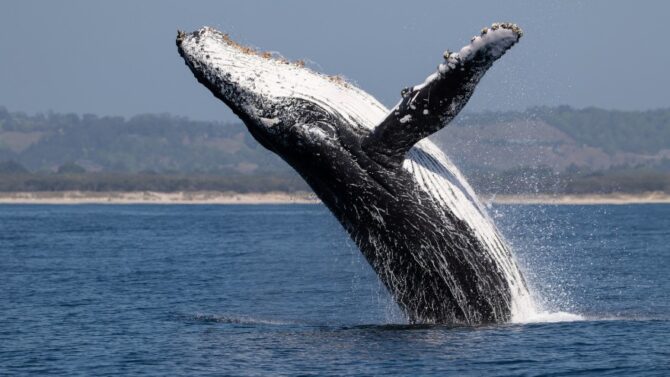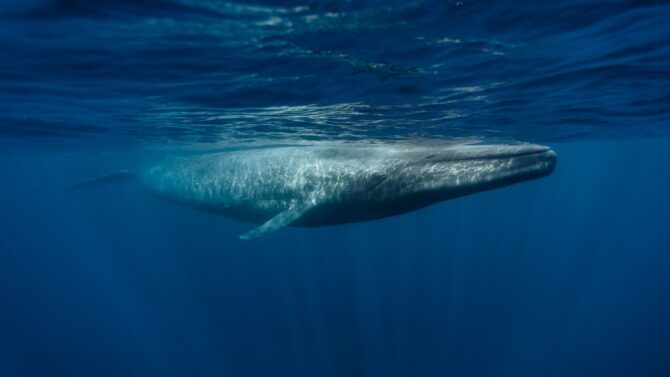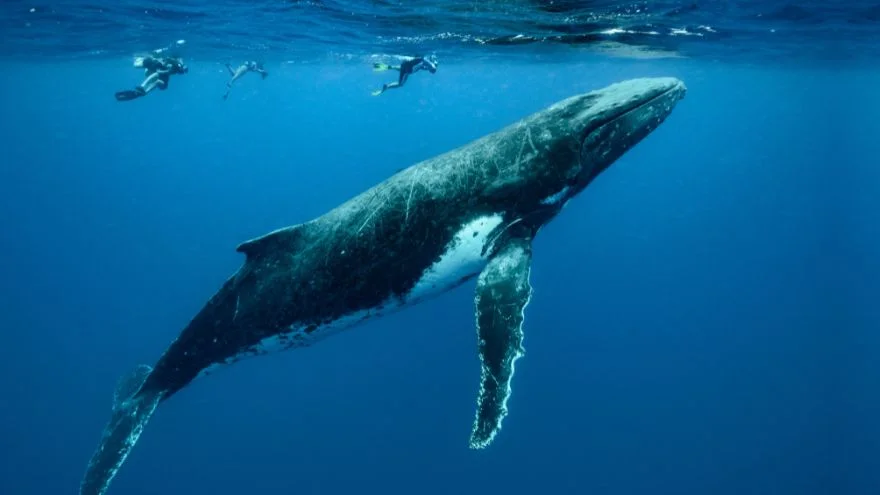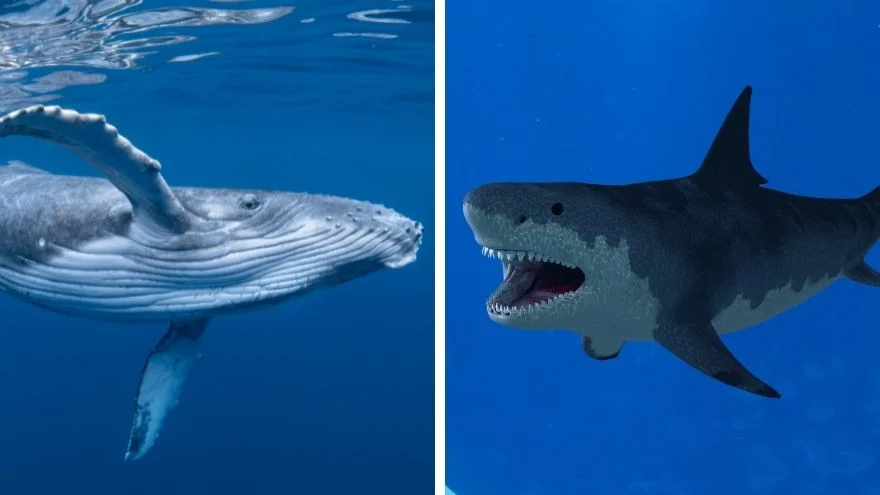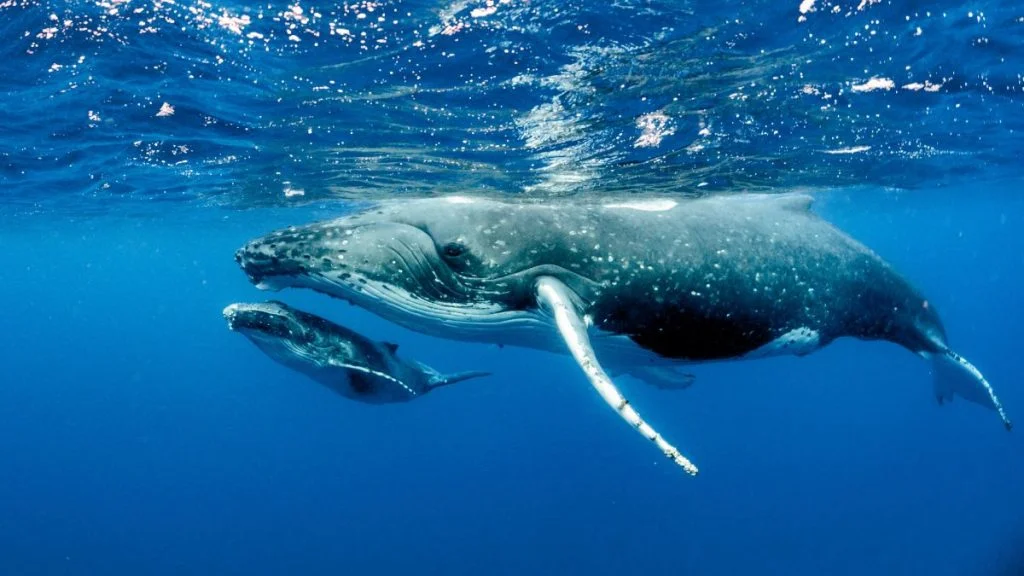Whales have always been considered different from fish. They are marine mammals, and though they share the same habitat as fish, they are different.
One can see several distinctions in the way they breathe, as well as in how they reproduce.
Because they differ greatly from other aquatic animals, do whales lay eggs or give birth to their young alive?
Whales do not lay eggs. Like other mammals, they give birth live. They have a mating procedure and sexually reproduce, after which the female gives birth to calves.
In this article, you’ll learn more about the whale reproduction process and get answers to common questions that people ask.
Do Whales Lay Eggs or Give Birth?
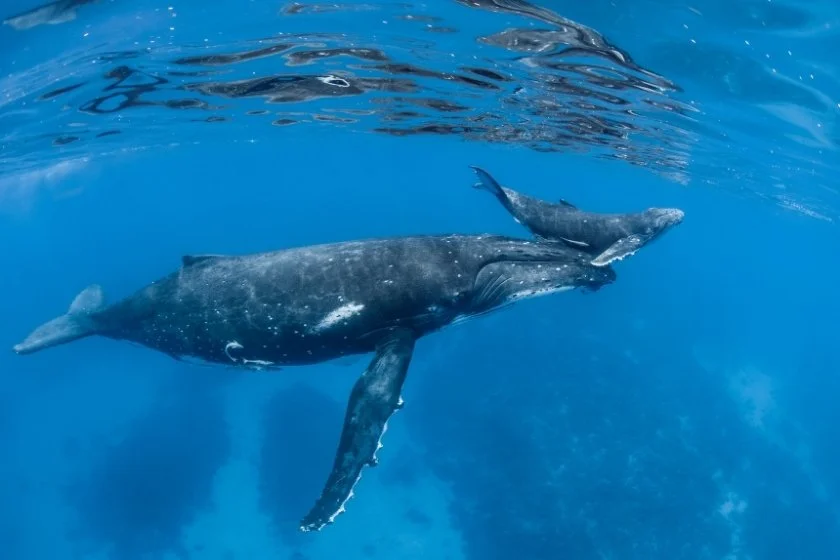
Most people assume that whales lay eggs because they think whales are fishes or some other egg-laying aquatic animal.
Whales are not fish, and therefore they do not lay eggs. They are mammals like humans who get pregnant and have live births.
Though they carry their pregnancy to a full term like semi-aquatic and terrestrial mammals, whales’ reproduction process is very different because they are marine mammals.
Baby whales are called “calves.” They are born alive and underwater with their tails first, unlike land mammals whose offsprings come out head first.
How Do Whales Mate?
The humpback male whales are famous for singing love songs to their females during breeding seasons.
These guys sing a different song every season, and it’s almost like they’re a cute boy band composing new hits to woo their women.
It is challenging for whales to mate in their marine habitat because there’s so much water all around with no place to lean against.
Also, they need to come up to get air at regular intervals. These can become hurdles during the mating process.
Whales have mating seasons. During these times, they migrate from their feeding grounds to long distances of 5000 miles or more in search of mating partners and breeding grounds. 1
Not all migrate, though. Some would rather inhabit the same environment throughout the year or migrate in search of food only.
Mating rituals and copulating methods also vary greatly amongst different whale species.
While male humpback whales will leap, splash and fight in a mating tradition, others have unique ways.
The mating season is believed to occur towards the end of the summer, with births occurring in the winter. Also, whale reproduction is entirely communal.
A female whale will allow one or two males to escort her while she swims, and the rest of the males will follow in a line behind.
They swim together for several days, and when the time is right, the males will attempt to mate with the female.
The female whales can mate with several males as they deem fit, and each male will want to use their sperm to flush out that of the other male to maximize their chances of offspring. It is truly a competition out there.
Whale Reproduction Phases
First Phase: Mating
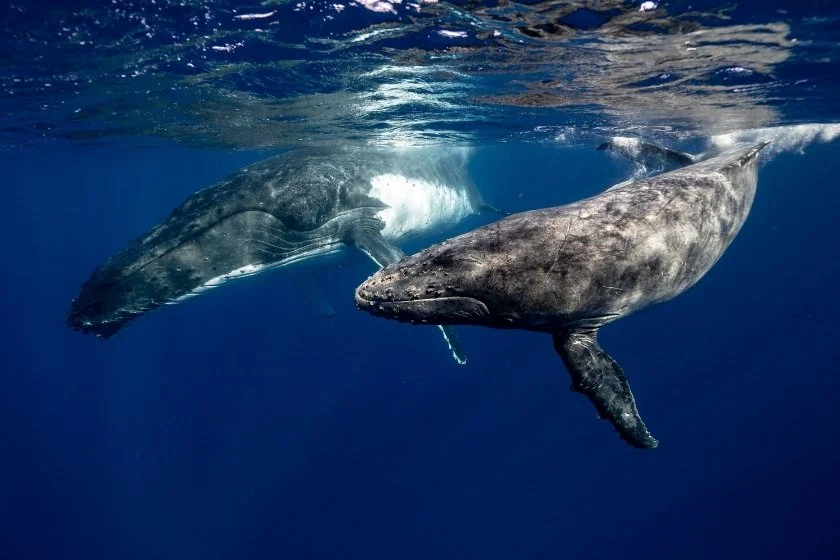
The first reproduction stage in whales is the courtship and mating period.
At this time, male whales go out in a bid to find a fertile female partner to mate and reproduce with. In this stage, they do everything possible to attract their females.
The males compete amongst themselves by showing off worthiness, dominance, competitive advantages, and strengths.
They compete to prove they’re better mating partners than the next guy.
Still, female whales are polygamous and can have multiple mating partners in a mating season, which increases their chances of producing healthy offspring.
Courtship practices some male whales engage in before mating includes:
- Rolling and rubbing the female that might have caught their fancy to get familiar with them. The males do this to ensure that the females are open to mating.
- Using their fins to compel and align females into mating postures.
- Singing lovely and melodic songs to attract the females.
- Bringing gifts to their females to entice them into mating. They display different swimming and acrobatic stunts, dive out of the water, slap fins in the water; anything to get the female whales to notice them. 2
Second Phase: Gestation Period
After courting and mating, the next phase is the pregnancy period (also called the gestation stage).
In this stage, the fertile female whales get pregnant and carry their babies in their wombs just like the human female.
A typical whale’s gestation period can last about 13-17 months, but it might take longer depending on the species.
Some species will bear their children in the mating grounds while others would migrate to warmer waters to give birth.
The latter desire to have their calves in temperate conditions.
Whales have an umbilical cord where blood-rich-in-nutrient passes through to feed the baby whale in the womb, and this helps keep the baby healthy and safe till it’s ready to be born.
It also helps remove toxic wastes and chemicals from the womb.
Here is a table that shows the gestation periods of some whales:
| Whale species | Gestation Period |
|---|---|
| Beluga whale | 14 – 15 months |
| Blue whale | 11 – 12 months |
| Killer whale | 15 – 18 months |
| Humpback whale | 11 – 12 months |
| Sperm whale | 14 – 16 months |
| Minke whale | 10 months |
| Gray whale | 13½ months |
| Bowhead whale | 10 – 12 months |
Third Phase: Birthing
After the courting, mating, and pregnancy stage, the next is the birth period.
It is pretty usual for cetaceans to birth their young with their tail first to prevent them from drowning, but there are some exceptions, like the gray whales, whose calves are born head first. 3
Female whales have mammary glands like humans, and they feed their calves with the milk that comes from them.
The mother will continue to breastfeed her baby whale till it becomes mature and can survive on its own.
The birthing process of a whale is very long and strenuous. Females give birth every two to three years, and they can weigh up to 10 tons during their pregnancy.
Even the birthing process itself is quite dangerous for the mother.
Many species give birth while swimming, and the newborn baby is about the size of a large grapefruit. It takes a long time for the baby to emerge from its mother.
The baby is fully submerged in its mother’s blood as it is pushed out of her body. The blood helps to protect the baby from getting injured as it emerges from its mother’s body.
The mother whale swims in a particular position to allow her baby to exit safely.
A newborn whale calf will drink its mother’s milk from her mammary glands for one to two years before it becomes mature and fully independent.
Related: Do Dolphins Lay Eggs Or Give Birth To Their Young?
Frequently Asked Questions
What is a whale’s birth called?
The whale’s birth is called calving, and like many mammals, whales give birth live. The young babies are called calves.
How do whales make babies?
In the breeding grounds, a pod of male whales will compete for the attention of the females. She will pick one of the males to mate with, and only one egg will be fertilized internally by the male(s) sperm deposited in her, and babies are made! (she can mate with different males at once too).
When does a whale reach sexual maturity?
The age at which blue whales reach sexual maturity is between five to fifteen years.
How many babies do whales give birth to at once?
Whales have babies every 2-3 years and are uniparous—they always give birth to a single calf at a time. It is rare to see these marine mammals have more than one calf at once because it is most likely they don’t survive. Sei whales are the only species known to have the highest multiple birth records.
Wrap Up
Whales are genuinely fantastic creatures, but they are also very mysterious.
The process of whale reproduction is quite different from that of humans, and these massive creatures have a very complex birthing process, as you’ve discovered in this article.
Learning about how they reproduce is a fascinating way to explore their lives.
References & Notes
- Virginia M., 2008. Big Love. Smithsonian Magazine[online]
- Watch the Elaborate Courtship of Three Gray Whales.[online] National Geographic.
- Tess, 2014. Cute Calves Appearing in the Pacific. [online] WildWhales

